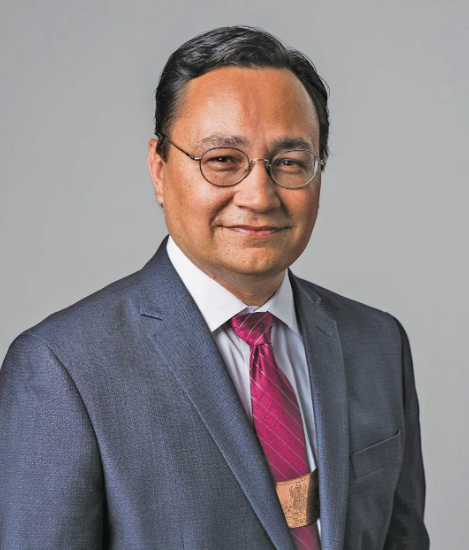
- Details
- By Chuck Hoskin Jr
Guest Opinion. The Cherokee people have always been deeply connected to the land. Since time immemorial, we have depended on the land for food and medicine, natural beauty, and the perfect setting for Cherokee community life and cultural activities. From our ancient homelands in the southeast to our reservation in northeast Oklahoma, the land has always been essential for our collective well-being.
In close collaboration with Deputy Chief Bryan Warner, the Council of the Cherokee Nation and our Secretary of Natural Resources Chad Harsha, I have worked to be a responsible steward of Cherokee land, balancing acquisition, development and conservation.
The Cherokee Nation Park, Wildlands, Fishing and Hunting Preserve Act of 2021 improved how we manage tribal lands, emphasizing public access to parks and conservation. We set aside over 6,000 acres of tribal lands in northeast Oklahoma to support outdoor activities, conservation and traditional practices. Thanks to this act, we are able to host more events, offer more educational experiences, and provide more opportunities for Cherokee families to enjoy the great outdoors.
Recently, we broke ground on the expansion of the Cherokee Nation Park at Sallisaw Creek in Sequoyah County. We are developing a 100-acre area within the 1,300-acre property. Phase 1 will include infrastructure improvements, an expanded tournament-style boat ramp, a few cabins and 74 RV hookup spaces. This will be a destination for local citizens and tourists alike and further showcase the beauty of our reservation lands. Once completed, it will be open to the public for day-use, boating, horseback riding and limited hunting.
Also in Sequoyah County, we are proud to have opened Cherokee Nation’s first hunting and fishing preserve. The 4,300-acre preserve is already being used for hunts and actively managed for conservation by our Natural Resources Department. The preserve and these programs have benefitted numerous Cherokees citizens, both those who live on the reservation and visiting at-large citizens, with special opportunities for our veterans, elders and youth to enjoy the beauty of our reservation.

Two more locations of note include the Medicine Keepers’ Preserve and the Shawnee Preserve, which have both been set aside for cultural purposes. Medicine Keepers’ Preserve is a 1,000-acre site in Adair County rich with plants historically important to Cherokee traditions and culture. It is set aside for our Medicine Keepers, a group of fluent Cherokee-speaking elders who are dedicated to perpetuating the Cherokee language and knowledge of plants and sacred places. At the Shawnee Preserve,155 acres in Craig County are being held for cultural use by the Shawnee Tribe. This land is adjacent to our sister tribe’s ceremonial grounds, which makes it ideal for Shawnee traditional use.
Finally, we have begun work on the future Wilma P. Mankiller Park, a public park on Cherokee land near the W.W. Keeler Complex in Tahlequah. When completed in two years, this more than 6-acre park will include a community building, unique landscaping, public art, a playground and a statue of Chief Mankiller.
We are taking a thoughtful approach to the way we manage our land today so that generations from now Cherokees will continue to enjoy its beauty, resources and cultural lessons. The land is our shared responsibility, and, when we manage it carefully, it is a shared blessing for the Cherokee people.
Chuck Hoskin, Jr. is the principal chief of the Cherokee Nation.
More Stories Like This
Extending the Affordable Care Act Is a Moral Imperative for Indian CountryAll Is Fair in … War?
Why Federal Health Insurance Policy Matters to Cherokee Nation
The Absence of October's Job Report Shows Why Native American Communities Need Better Data
Tribal IDs Are Federally Recognized. ICE Agents Are Ignoring Them.
Help us defend tribal sovereignty.
At Native News Online, our mission is rooted in telling the stories that strengthen sovereignty and uplift Indigenous voices — not just at year’s end, but every single day.
Because of your generosity last year, we were able to keep our reporters on the ground in tribal communities, at national gatherings and in the halls of Congress — covering the issues that matter most to Indian Country: sovereignty, culture, education, health and economic opportunity.
That support sustained us through a tough year in 2025. Now, as we look to the year ahead, we need your help right now to ensure warrior journalism remains strong — reporting that defends tribal sovereignty, amplifies Native truth, and holds power accountable.
 The stakes couldn't be higher. Your support keeps Native voices heard, Native stories told and Native sovereignty defended.
The stakes couldn't be higher. Your support keeps Native voices heard, Native stories told and Native sovereignty defended.
Stand with Warrior Journalism today.
Levi Rickert (Potawatomi), Editor & Publisher

